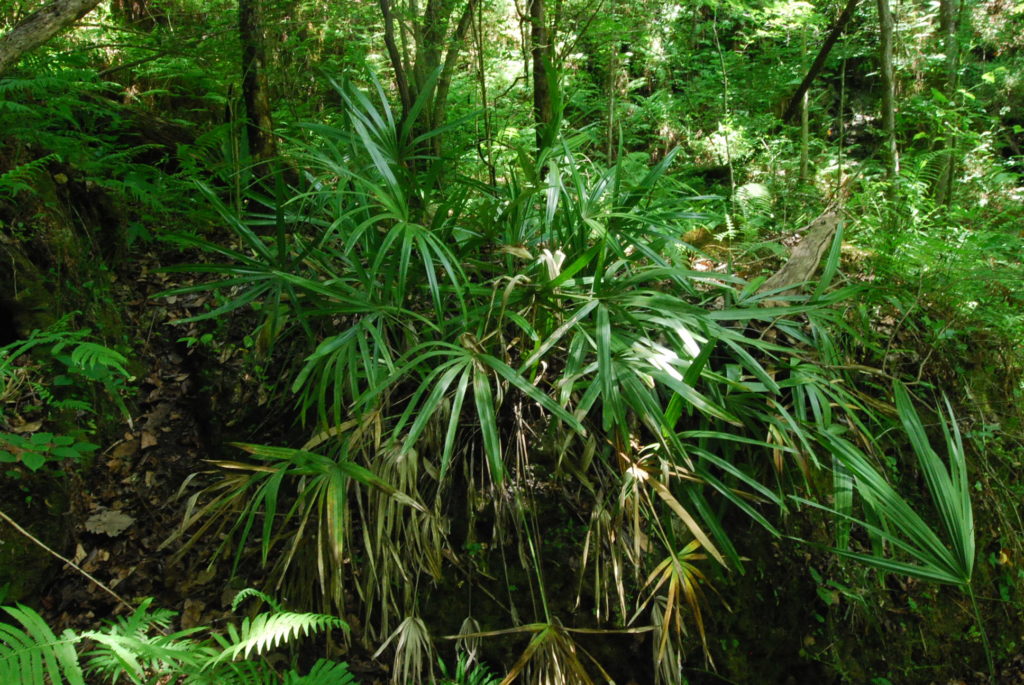
Needle Palm
Rhapidophyllum hystrix
Needle Palm is the most cold tolerant palm in the United states. It naturally grows from Central Florida up to coastal Southeast South Carolina. It can be grown in Washington DC and states where winter temperatures stay above 0 degrees F.
The base will produce additional stems and form a clump four or more feet across and four feet high. The dark green fan shaped leaves are six feet long including the petiole so that the entire plant may reach 10 feet or more in height.
At the base of the leaves are 10 inch skewers that are quite sharp and painful. Do not stick your hand down to the base when cleaning out debris. The plants are either male or female (dioecious) with the female plant producing one inch round nutlike seeds in a cluster if there is a male nearby for pollination.
Soil must be rich and preferably moist, yet it can tolerate wet soils too. Average soil is fine, but you will need to use slow release fertilizer every 3-6 months if the plants stop growing and start dying back. Light shade is best although full sun is OK. Needle Palm is not salt tolerant.
There are many Needle Palms in North Florida growing on hillsides near rivers and springs. These tend to grow like a Saw Palmetto with the active growth pushing forward and rooting along the ground while the old stem dies behind it.
I have planted some in dry soil with high organic matter content and no more watering than to establish it in one month. It can be used in a moist woodland planting mixed with Red Maple, Sweetgum, Water Hickory, Bald Cypress, Laurel Oak, Live Oak and Sweet Bay Magnolia.
Other understory plants may include various ferns, Coontie, Salvia, Prairie Iris, Yellow Canna, Florida Lily, American Crinum Lily and other shade tolerant wildflowers and low shrubs.